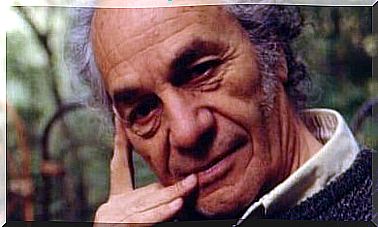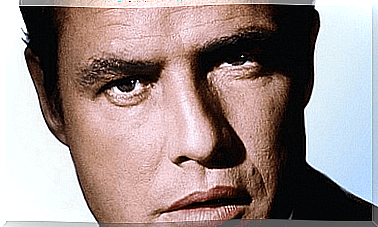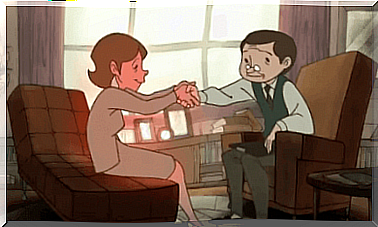The 4 Steps Method For Obsessive Thoughts

Are you familiar with Schwartz’s 4-step method for obsessive thoughts? We talk about it in this article!
Obsessive thoughts are mental products that seem to be endowed with autonomy. In most cases, when we try to stop or control them, they paradoxically increase exponentially.
When we deny or avoid obsessing over something, we actually keep that obsession alive much longer. Think of the classic summer catchphrase that you hate and that keeps spinning in your head without being able to chase it away.
We know that exposure with prevention of response (ERP) is the treatment of choice for OCD, especially when accompanied by rituals.
In the case of pure obsessions, we can opt to record our obsession or write it down and then expose ourselves to it repeatedly, until the anxiety subsides.
However, there is an innovative and rather effective technique based on cognitive therapy which appears to show very promising results in some patients. It is Schwart’s 4-step method. Dr. Jeffrey Schwartz is a great researcher working on the brain plasticity of OCD.
Dr. Schwartz has shown that through the 4-step method, it is not only possible to control obsessive thoughts, but to ensure that the metabolism of this neural circuit returns to normal levels.

Schwartz’s 4-step method
As the name suggests, this technique consists of 4 cognitive phases that the patient must follow whenever an obsessive thought bursts into his mind.
The aim is for the patient to create a habit, so that the technique becomes part of his daily life. The first three steps are the most important, especially in the initial phase of treatment. Schwarzt’s 4-step method is based on the “4 Rs”.
Redefine
Redefining thoughts basically consists of giving thoughts and actions their real name: obsessions and compulsions. We need to be aware of what happens to us. OCD is a pathology and our obsessions are the product of it, as well as neutralizations.
This makes it much easier to put everything back in its place. To train yourself to redefine, you don’t need to tell yourself, “I think I can hurt my mom if I don’t count to 100 before bed.”
But rather repeat: “I suffer from obsessive thoughts due to my OCD, therefore, the idea that I will hurt my mother if I don’t count to 100 before bed is just the product of my disorder.”
This presupposes the effort required to maintain awareness or what is called “the impartial witness”, that is, the power of self-observation and the ability to recognize what is real from what is merely a symptom, and to reject the pathological impulse until it begins to give way and disappear.
Reassign
The objective of this step is to attribute the responsibility for the obsessive symptoms to those in charge, that is to the DOC itself. The idea is that the patient repeats himself: “ It’s not me, it’s the OCD “. An OCD rooted in a biochemical imbalance of the brain and / or a learning error in childhood.
Understanding the role the brain plays in OCD thoughts and impulses is extremely important.
If we recognize that it is a psychological or medical disorder and do not confuse it with who we are, we can gain more motivation to avoid avoidance behaviors.
Furthermore, the more demoralizing and destructive behaviors typical of people with OCD will become less frequent: that is, the frustrated attempt to get rid of thoughts and impulses.
Refocus
The goal is to shift our attention, even for a few minutes, to something else that has nothing to do with our thoughts.
Obsessive people develop an automatic and quick habit of what they think and do with their thoughts. The concept, once the previous steps have been made aware, is to make a “change of gear” and consciously de-automate the brain.
In this sense, hobbies are a great alternative. Walking the dog, gardening, painting a picture, listening to music, or any other activity you think might inhibit your impulses.
The kind of inner dialogue that can help is the following: “I have a thought because of my OCD, it’s not real, it’s time to do something else.”

Reconsider
To reconsider is to accept and anticipate. As for acceptance, if we have done the above steps correctly, it will be easier for us to start reevaluating the problem for what it is, and accepting it.
It will avoid resignation, inducing us to continue working to improve; without fighting OCD because we already know that the struggle and fixation do nothing but feed it.
On the other hand, anticipating means repeating to yourself: “It seems your OCD is already starting to do its job, you know you have to ignore it and focus on something more productive and cheerful”.
Schwartz’s 4-step method: final considerations
The Schwartz 4 step method has been shown to be very effective in combating the symptoms of OCD; but it must also be admitted that it is not easy to apply. The patient must practice it with motivation and commitment until it becomes a habit.
As mentioned, it is important to work with great commitment on the first three phases, precisely because they are the ones that lead us to separate from OCD, and to see it as an “entity” outside of us, and which is not us.
To recognize it as a pathological disorder that we have to live and face, but which can be overcome.









